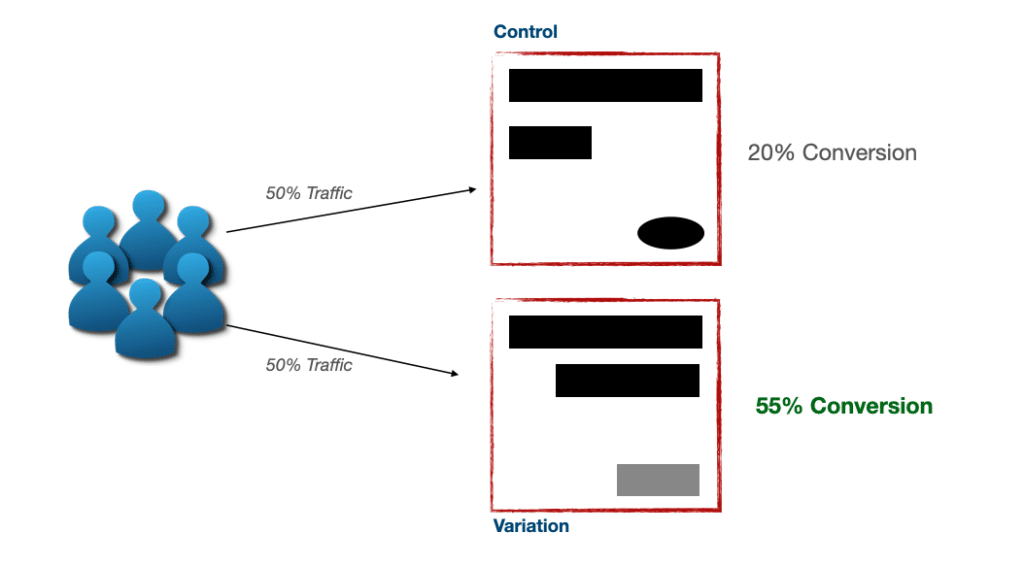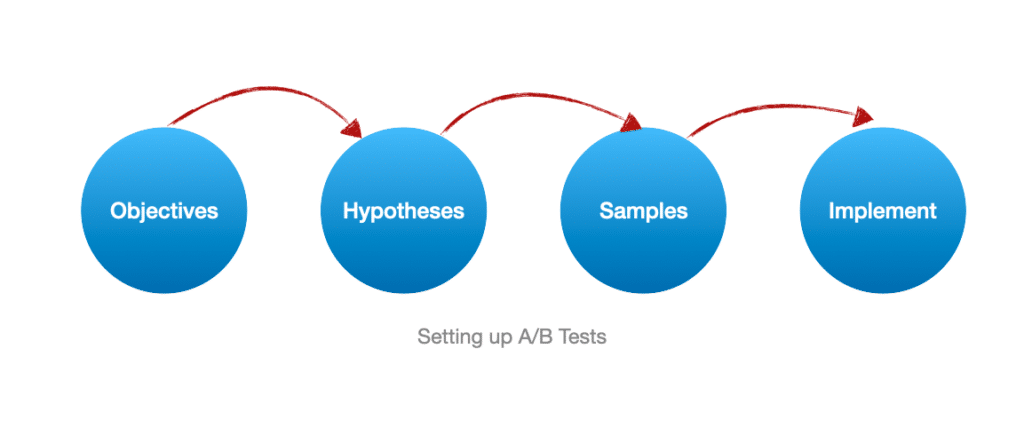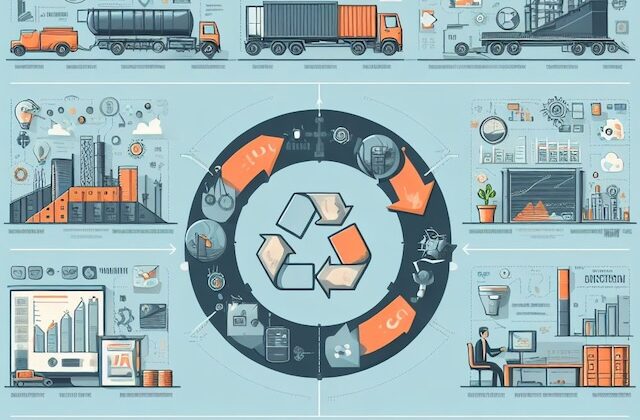
A/B Testing
“Product management is a continuous cycle of learning, building, and iterating.”
– Braden Kowitz
Welcome to Day 19 of the PM series – Product Management in 30 days!
Product managers are at the forefront of innovation and optimization in the digital age. They are tasked with delivering products that meet user needs and continually evolve to stay competitive. A/B testing and experimentation are indispensable tools in a product manager’s toolkit. In this exhaustive post, we will discuss A/B testing and experimentation, exploring the concepts, strategies, best practices, and a real-world example to showcase their power in driving product improvement.
Learning objectives
- A/B Testing Essentials: Define A/B testing as a controlled experiment comparing versions to determine performance, with users divided into control (A) and variant (B) groups.
- Benefits of A/B Testing: Identify benefits, including data-driven decision-making, fostering continuous improvement, and ensuring user-centric product development.
- Setting Up A/B Tests: Recognize key steps in setting up A/B tests, from defining clear objectives to implementing tests using dedicated tools
- Real-World Application: Understand A/B testing through a real-world example, optimizing a subscription flow for a streaming service, from setting objectives to analyzing results.
👨🔬 Understanding A/B Testing and Experimentation
At its core, A/B testing is a controlled experiment that compares two versions of a web page, feature, or element to determine which one performs better in terms of a specific metric, such as conversion rate, click-through rate, or user engagement.
What is A&B? Generally, the users are divided into two groups- A & B.
- Group A or control version (A) is a group of users with NO Change.
- Group B or variant version (B) is a group of users who are the ones with modified software.

A/B testing allows product managers to make informed decisions based on data. By creating two or more variations (A, B, C, etc.) of a design or feature and exposing different groups of users to each variation, you can measure the impact of changes on user behaviour.
➡️ The Benefits of A/B Testing
The benefits of A/B testing are numerous:
- Data-Driven Decisions: A/B testing provides empirical evidence for making decisions, reducing reliance on intuition or gut feelings.
- Continuous Improvement: A/B testing fosters a culture of constant improvement and optimization, where small, incremental changes lead to significant improvements over time.
- User-Centered Design: By aligning product development with user preferences and behaviours, A/B testing ensures that product improvements are user-centric.
➡️ Setting Up A/B Tests ⚙️
Setting up A/B tests involves four key steps:

- Define Clear Objectives: Before conducting an A/B test, clearly define what you want to achieve. This could be increasing sign-up rates, reducing bounce rates, or improving revenue per user.
- Create Hypotheses: Develop hypotheses for changes you want to test. For example, “Changing the colour of the call-to-action button will increase click-through rates.”
- Randomization and Sample Size: Ensure the test groups are random and you have a sufficient sample size to make statistically significant conclusions. Small sample sizes can lead to unreliable results.
- Implement the Test: Use A/B testing tools to implement the changes and distribute traffic evenly between control (A) and variant (B) groups. These tools often have features for setting up experiments and tracking results.
➡️ Analyzing A/B Test Results ☑️
Analyzing A/B test results is a critical step in the process. Key considerations include:
- Statistical Significance: Learn to determine if the differences observed are statistically significant. Statistical significance helps you avoid drawing conclusions based on chance variations.
- Key Metrics: Focus on the primary metrics you aimed to improve, such as conversion rate, and check for unintended consequences on secondary metrics. For instance, increasing click-through rates may inadvertently decrease the time users spend on your site.
- Interpretation and Action: Decipher the results and decide on action. Should you implement the change, run further tests, or discard the hypothesis? The data should guide your decision-making process.
➡️ Advanced A/B Testing Strategies 🤖
As you gain experience with A/B testing, you can explore more advanced strategies:
- Multivariate Testing: Instead of testing just one element, multivariate testing allows you to experiment with multiple variables simultaneously. This is useful when you want to understand the combined impact of changes.
- Sequential Testing: Use sequential testing to make decisions faster without sacrificing accuracy. This approach is particularly valuable when time is a critical factor in decision-making.
- Personalization: Learn how to personalize user experiences using A/B testing. Personalization involves tailoring content or features to specific user segments based on their behaviour or preferences.
💁🏻♂️ Real-World Example: Optimizing a Subscription Flow
Imagine you’re a product manager for a popular streaming service.
- Objective: Increase the conversion rate for users who start the subscription process.
- Hypothesis: Shortening the number of steps in the subscription process will lead to higher conversion rates.
- Implementation: You develop and test a simplified subscription flow against the existing flow.
Results and Analysis: In a real-world example, after implementing the simplified subscription flow and running an A/B test, you observe the following results:
Control Group (A): 5% conversion rate.
Variant Group (B): 7% conversion rate.
The variant group (B) showed a significant increase in conversion rates compared to the control group (A). The statistical significance confirms that the change is not due to chance.
You decide to roll out the simplified flow to all users, substantially increasing subscription revenue over the following months.
This real-world example illustrates how A/B testing can lead to tangible improvements in a product’s performance.
Best Practices and Pitfalls 😱
To ensure the success of your A/B testing efforts, consider the following best practices and avoid common pitfalls:
#️⃣ Best Practices
Test One Thing at a Time: Isolate variables to understand the impact of individual changes.
Document and Share: Maintain records of tests and share learnings across teams to avoid repeating experiments.
Long-Term Perspective: Understand that some changes may have delayed effects. Continue monitoring and iterating over time.
#️⃣ Pitfalls
- Ignoring Sample Size: Drawing conclusions with inadequate sample sizes can lead to unreliable results.
- Ignoring Secondary Metrics: Focusing solely on primary metrics can lead to unintended consequences. Always consider the broader impact of changes.
- Ignoring User Feedback: A/B testing should complement user feedback, not replace it. Use both quantitative and qualitative data for a comprehensive view.
Building an Experimentation Culture and Tools
Building an experimentation culture within your organization is essential:
- Encourage a mindset of continuous improvement and learning. Instil in your teams the belief that every aspect of the product can be improved, and A/B testing is the tool to do it.
- Create an experimentation roadmap and allocate resources accordingly. Plan your testing strategy, including what you want to test, how you’ll test it, and who will be responsible for each experiment.
- Explore a range of A/B testing tools. There are various tools available, from open-source options to enterprise solutions. Choose the one that best fits your needs and budget.
🔔 Conclusion
A/B testing and experimentation are not just techniques; they are a way of thinking and a culture of improvement. By mastering these skills, product managers can drive data-driven decisions, optimize user experiences, and contribute significantly to the success of their products and organizations.
Quiz Time
1: What does A/B testing involve?
A) Assessing market trends
B) Comparing two versions to determine performance
C) Conducting user interviews
D) Creating marketing campaigns
2: What is the purpose of dividing users into control (A) and variant (B) groups in A/B testing?
A) To separate paying customers
B) To analyze user demographics
C) To perform statistical calculations
D) To conduct controlled experiments
3: What is one of the benefits of A/B testing?
A) Relying on intuition for decisions
B) Continuous product stagnation
C) Reduction in user engagement
D) Data-driven decision-making
4: What are the key steps in setting up A/B tests?
A) Conducting user interviews, developing hypotheses, analyzing results, implementing changes
B) Defining clear objectives, creating hypotheses, ensuring randomization and sample size, implementing the test
C) Setting financial goals, allocating marketing budgets, creating visual roadmaps, analyzing market trends
D) None of the above
5: In A/B testing, what is the purpose of analyzing statistical significance?
A) To create hypotheses
B) To avoid drawing conclusions based on chance variations
C) To focus on secondary metrics
D) To disregard user feedback
✍️ Write your answers in the comment section. e.g 1-a, 2-b, 3-c etc.
If you want to learn more about product management, you can also find other posts. The Full series is available here
One of the recommended books to learn about product management is Hacking Growth by Morgan B. and Sean E.
💌 Do drop me a comment below if you found the content useful and/or want me to write on a specific topic. This will make my day! 🙂
Also, share the post if you think this might help someone. The sharing link is at the top of the page.
Join FreeMentor as a student if you are a newbie in product management and want to have one Free 1:1 mentorship session.
Disclaimer:
Please note that I don’t make any guarantees about the information supplied in this post. I share educational and informational resources that are intended to help you succeed in understanding product management. You nevertheless need to know that your ultimate success or failure will be the result of your own efforts, your particular situation, and innumerable other circumstances beyond my knowledge and control.
#ProductManagement #ABTesting #Experimentation #ProductImprovement #DataDrivenDecisions #ProductManager #DigitalProduct

